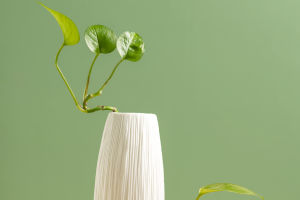Japanese flower arrangement, also known as ikebana, is a traditional art form that dates back to the 7th century.
It is a disciplined form of art that emphasizes simplicity, asymmetry, and the use of natural materials. The art of ikebana is deeply rooted in Japanese culture and is often associated with the appreciation of nature.
One of the fundamental principles of ikebana is the concept of ma, which refers to the space between objects. In ikebana, the empty space is just as important as the flowers and branches themselves, and the arrangement is designed to create harmony between the two.
The art of ikebana also emphasizes the use of natural materials, such as branches, leaves, and flowers, which are arranged in a way that highlights their natural beauty.
There are three main styles of ikebana: rikka, nageire, and shoka. Rikka is the most formal and traditional style of ikebana, which features tall and elaborate arrangements that represent the natural beauty of the mountains.
Nageire, on the other hand, is a more free-form style of ikebana, which is characterized by the use of fewer materials and a more spontaneous approach to arrangement. Shoka is a modern style of ikebana, which emphasizes simplicity and minimalism, with a focus on creating harmony between the flowers and the container.
The tools used in ikebana are also an important aspect of the art form. The most basic tools include a vase, a kenzan (a small metal device used to hold the stems in place), and a pair of scissors. More advanced practitioners may also use a variety of other tools, such as a saw, or a pair of tweezers, to achieve the desired effect.
When creating an ikebana arrangement, the practitioner begins by selecting the flowers and branches that will be used. The selection of materials is based on a variety of factors, such as the season, the occasion, and the desired mood of the arrangement. Once the materials have been selected, the practitioner will begin to cut and arrange them, using the principles of ikebana to guide the placement of each element.
One of the key principles of ikebana is the use of asymmetry. In ikebana, the arrangement is not meant to be perfectly balanced, but rather to create a sense of dynamic tension between the elements. This is achieved by using different sizes and shapes of materials, as well as by creating an intentional imbalance in the arrangement.
Another important principle of ikebana is the use of negative space. In ikebana, the empty space between the materials is just as important as the materials themselves and is often used to create a sense of depth and perspective in the arrangement. This is achieved by carefully selecting the position of each element and creating a balance between the positive and negative space.
The final result of an ikebana arrangement is meant to be both beautiful and meaningful. Each element in the arrangement is carefully chosen to create a specific mood or atmosphere, and the arrangement as a whole is meant to convey a sense of harmony and balance.
The arrangement is often displayed in a prominent location, such as in a tokonoma (a special alcove in a traditional Japanese home), where it can be appreciated and admired.
Ikebana is a traditional Japanese art form that emphasizes simplicity, asymmetry, and the use of natural materials.


